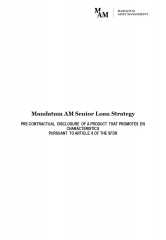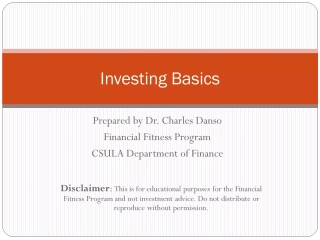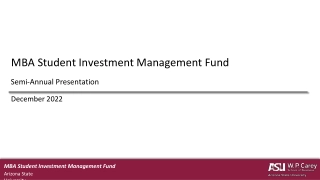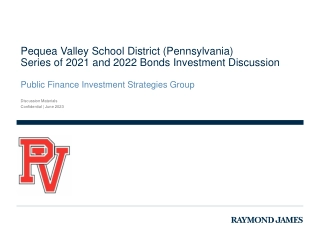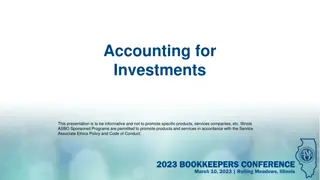
The Ultimate Guide to the Best Investment Plans
Investment planning is essential for achieving financial stability and growth. It involves the strategic allocation of resources into various investment vehicles to meet specific financial goals. Whether you are saving for retirement, your child's education, or looking to grow your wealth, having a well-thought-out investment plan is crucial. This comprehensive guide explores the best investment plans, their benefits, and how to choose the right one for your needs
Uploaded on | 0 Views
Download Presentation
Please find below an Image/Link to download the presentation.
The content on the website is provided AS IS for your information and personal use only. It may not be sold, licensed, or shared on other websites without obtaining consent from the author. Download presentation by click this link. If you encounter any issues during the download, it is possible that the publisher has removed the file from their server.
Presentation Transcript
The Ultimate Guide to the Best Investment Plans Introduction to Investment Planning Investment planning is essential for achieving financial stability and growth. It involves the strategic allocation of resources into various investment vehicles to meet specific financial goals. Whether you are saving for retirement, your child's education, or looking to grow your wealth, having a well-thought-out investment plan is crucial. This comprehensive guide explores the best investment plans, their benefits, and how to choose the right one for your needs. Understanding Investment Goals Before diving into specific investment plans, it's important to identify your investment goals. These goals can be categorized into short-term, medium-term, and long-term, each requiring a different investment approach. Short-Term Goals Short-term goals typically range from a few months to three years. These may include saving for a vacation, building an emergency fund, or purchasing a new gadget. For short-term goals, investments should focus on liquidity and low risk.
Medium-Term Goals Medium-term goals span three to ten years. Examples include saving for a down payment on a house or funding a child's education. Investments for medium-term goals should balance risk and return, offering growth potential while preserving capital. Long-Term Goals Long-term goals extend beyond ten years and include retirement planning, long-term wealth accumulation, or setting up a fund for your child's future. Long-term investments can afford to take on more risk, aiming for higher returns. Types of Investment Plans Stocks Stocks represent ownership in a company and offer the potential for high returns. They are suitable for investors with a higher risk tolerance and a long-term investment horizon due to market volatility. Bonds Bonds are debt securities issued by corporations or governments. They offer fixed interest payments and are considered lower risk compared to stocks. Bonds are ideal for conservative investors seeking steady income and capital preservation.
Mutual Funds Mutual funds pool money from multiple investors to purchase a diversified portfolio of stocks, bonds, or other securities. Managed by professional fund managers, mutual funds are suitable for investors looking for diversification and professional management. Exchange-Traded Funds (ETFs) ETFs are similar to mutual funds but trade on stock exchanges like individual stocks. They offer diversification, lower fees, and flexibility, making them a popular choice for both novice and experienced investors. Real Estate Real estate investments involve purchasing property to generate rental income or for capital appreciation. Real estate can provide steady income and diversification but requires significant capital and involves higher transaction costs and management responsibilities. Retirement Accounts Retirement accounts such as 401(k)s and IRAs offer tax advantages that help grow your savings faster. Contributions to these accounts can be tax-deductible, and the investment earnings grow tax-deferred until withdrawal. These accounts are essential for long-term retirement planning.
Fixed Deposits Fixed deposits are low-risk investments offered by banks, providing a fixed interest rate over a specified period. They are suitable for conservative investors looking for safety and predictable returns. Cryptocurrencies Cryptocurrencies are digital or virtual currencies that use cryptography for security. They are highly volatile and speculative, suitable for investors with a high risk tolerance and a keen interest in the technology behind them. Choosing the Best Investment Plan Assess Your Risk Tolerance Understanding your risk tolerance is crucial in choosing the right investment plan. Risk tolerance is influenced by factors such as age, income, financial goals, and personal comfort with market fluctuations. Investors with a high risk tolerance might lean towards stocks or cryptocurrencies, while those with lower risk tolerance might prefer bonds or fixed deposits. Diversification Diversification involves spreading your investments across different asset classes to reduce risk. A well-diversified portfolio can help mitigate losses in one asset class by gains in another. Mutual funds and ETFs are excellent options for diversification.
Consider Your Time Horizon Your investment time horizon significantly impacts the type of investments you should choose. Longer time horizons can afford higher risk investments like stocks and real estate, while shorter time horizons should focus on low-risk, liquid assets. Evaluate Fees and Expenses Investment costs, including management fees, transaction fees, and taxes, can significantly impact your returns. Opt for low-cost investment options such as ETFs and index funds to maximize your net returns. Stay Informed and Review Regularly The financial markets are dynamic, and it s essential to stay informed about market trends and economic conditions. Regularly reviewing and rebalancing your investment portfolio ensures that it remains aligned with your financial goals and risk tolerance. Best Investment Plans for Different Goals For Retirement 401(k) and IRA Plans: These offer tax advantages and employer contributions, making them ideal for retirement savings. Target-Date Funds: These funds automatically adjust their asset allocation as you approach retirement, providing a balance of growth and security.
For Education 529 College Savings Plans: These are tax-advantaged savings plans designed specifically for education expenses. Education Savings Accounts (ESA): Also known as Coverdell ESAs, they offer tax-free growth if the funds are used for education expenses. For Wealth Accumulation Stocks and ETFs: These offer the potential for high returns and are suitable for long-term wealth building. Real Estate: Investing in properties can provide both income and capital appreciation over time. For Emergency Fund High-Yield Savings Accounts: These offer liquidity and a higher interest rate compared to regular savings accounts. Money Market Funds: These provide low-risk investment options with better returns than traditional savings accounts. Conclusion Choosing the best investment plan requires a clear understanding of your financial goals, risk tolerance, and investment time horizon. By diversifying your portfolio and considering low-cost investment options, you can optimize your returns while managing risk. Regular review and adjustment of your investment strategy are crucial to stay on track towards achieving your financial objectives.

